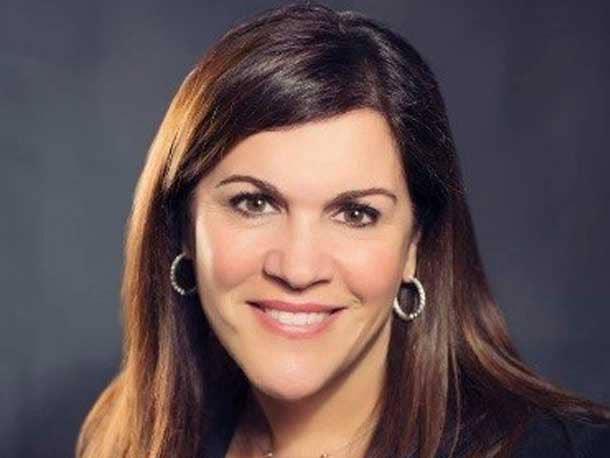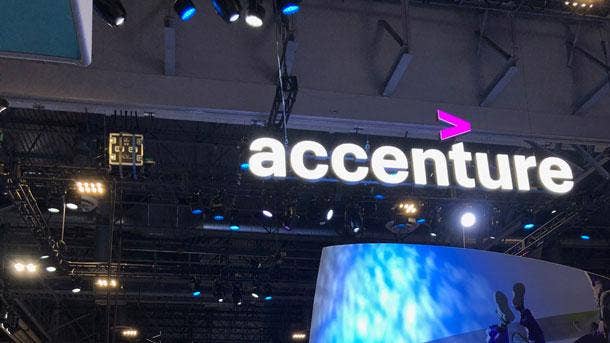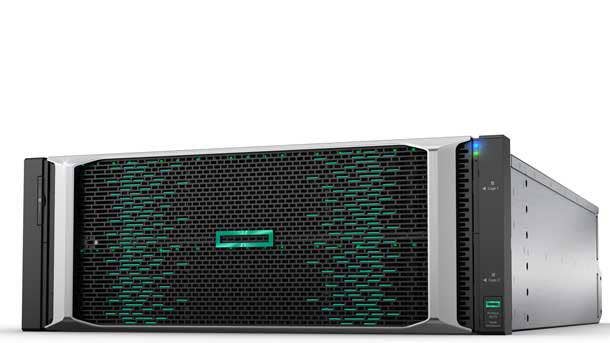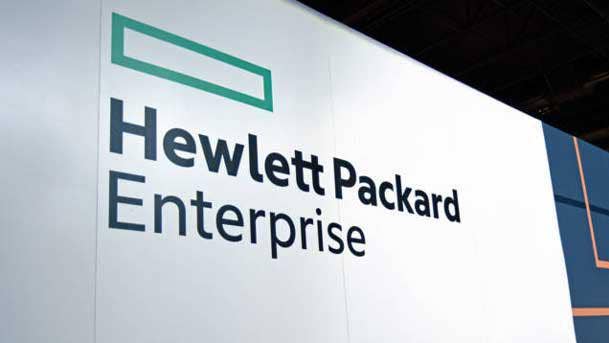Leslie Maher: GreenLake XaaS Pivot Is An HPE Channel ‘Differentiator’
HPE Channel Chief Leslie Maher says that helping partners pivot to an Everything-as-a-Service model with GreenLake is a partner 'differentiator' for HPE.

Hewlett Packard Enterprise North America Channel Chief Leslie Maher said that helping partners pivot to an Everything-as-a-Service (XaaS) model with GreenLake is a partner “differentiator” for HPE—a longtime channel stalwart.
“GreenLake is not a product sale,” said Maher in an interview with CRN. “GreenLake is actually a business model change as well. We are working really closely with our partners to help them transform to be able to transact business in an as-a-service consumption model.”
HPE’s hand-in-hand work with partners on business model transformation is making a big difference for partners grappling with everything from sales training and compensation to recurring revenue managed services in a pay-per-use model, said Maher.
“We are working with the channel as true partners to help them transform with us,” said Maher. “That is a differentiator for us as we look at why partners are coming with us on this journey. We are doing this with them hand in hand.”
The HPE channel transformation is taking hold. In HPE’s last quarterly report, GreenLake orders through the channel were up a whopping 326 percent.
Powering the GreenLake recurring revenue as-a-service transformation is a robust 17 percent up-front rebate for partners completing GreenLake deals and the highest 5X multiplier in the HPE partner compensation incentive program on those deals.
The 17 percent up-front rebate and 5X multiplier allow solution provider sales reps to be fully compensated up front on the multiyear GreenLake deals just as if it were a traditional big-budget capital expenditure IT purchase. Another key to GreenLake sales growth: the ability for partners to add their own recurring revenue managed services to the GreenLake offers.

What are you doing to help partners sell GreenLake?
GreenLake is not a product sale. GreenLake is actually a business model change as well. We are working really closely with our partners to help them transform to be able to transact business in an as-a-service consumption model. For many of them, it impacts how they compensate their sales reps, what it means to their business.
We are truly partnering up to not only have this great product offer in the market and give them great front-end benefits—we are working with the channel as true partners to help them transform with us. That is a differentiator for us as we look at why partners are coming with us on this journey. We are doing this with them hand in hand.
We have done some two-day workshops to help partners sort through what are the barriers for them to move into this business model. I think we have really elevated the conversation.
Partners recognize they need to make the change. We are the partner to help them.
What kinds of wins are you seeing with GreenLake?
The wins are across all segments, and a very large percentage of them are with our partners. So it is not limited to just the very largest accounts. There are offerings that are more standardized and can be transacted more easily, and then there are the more customized solutions for the larger partners. Our partners are playing in both spaces.
What is the challenge for partners with GreenLake?
The opportunity is around pivoting to as-a-service. The challenge is for all of us to understand how to operate in that new world. That takes some heavy lifting—some new work. While it is a challenge, it is a big opportunity.

What is the HPE vision?
Our vision is to be an edge to cloud Platform-as-a-Service company. So GreenLake is going to enable that as-a-service capability, but within it edge solutions are critical as well as hybrid IT. Certainly, a lot of customers want to consume IT today as a service, but many may not want to do that and our portfolio supports the infrastructure to either do it on-premises or in a cloud environment. Our goal is to be open, cloud-native, secure and autonomous.
So whatever point our customers are on that journey, we have a solution to support them. For partners, it all comes back to the innovation portfolio we have—either the organic innovation to drive those solutions or the broad range of partnerships whether it is cloud providers, systems integrators, ISVs and then our acquisitions. There is so much innovation to solve that edge to cloud story. That is the opportunity for partners.

Where trends are you seeing in the broad ecosystem of HPE partners?
I am also responsible for our systems integrators. We have a solution with Accenture—Accenture hybrid cloud. It is built on our infrastructure and GreenLake. If you want a cloudlike experience [on-premises] you can do that through Accenture.
The ISVs we work with all want to operate in an as-a-service environment so we have solutions with the ISVs with GreenLake. One example is VM as a service with Nutanix with GreenLake. All of it fits together. Everyone is trying to offer that cloud experience. Having all the pieces is essential.
Customers are not just buying the hardware. They are buying the hardware, the applications. What we are driving is the integration and making that experience simpler.
Are you replicating that Accenture deal with all the systems integrators?
They are all in different stages. They are all interested. The systems integrators are a natural community to adopt GreenLake. We are looking to build out joint go-to-market offers and capabilities with them for sure.
Is HPE tackling some of the cross-channel compensation issues within GreenLake?
As we work with our partners, most want to fit into the model which is as a Platform-as-a-Service company. We and our worldwide team are doing a lot of integration with our partners. In the field we are more of the delivery of that solution. The company at the macro level is working to integrate that.

How big an investment is HPE making in the channel with account coverage, etc.?
We have kept consistency in our coverage on our biggest partners. Where we have made the investments is in the acquisition of partners who play in the SMB space. On my team we have made a substantial investment in partner business managers—resources to help recruit, on-board, train and educate these new partners who are going to provide an ability for us to grow in that SMB small market where I think there is just tremendous opportunity.
What kind of sales traction are you seeing with the North America reorganization last year?
I give [HPE North America Managing Director] Dan [Belanger] a lot of credit. It is really a synergistic leadership team he has put together. While there has been a change in channel leadership, we now have [HPE Vice President] Terry Richardson running Enterprise East, [HPE Vice President] Peter Brennan running Enterprise West and [HPE Vice President] Jas Sood running Commercial.
This is a huge opportunity for the partners because this is a team of people that partners know what to expect from them. They are very channel-centric. They are channel-friendly. We have collectively been very clear with the partners on what our route to market is within the segments. So partners know what to expect.
So we are transparent and being consistent. So as an example both Terry and Peter have said one of their top priorities is acquisition accounts. They have a very discrete list of acquisition accounts. That is channel first- partner first. We are only going after those accounts with partners. We plan together and we co-sell together. So we are going to win together. There is a big opportunity in the acquisition accounts.
I am fortunate because I have such a great set of peers to work with. Everything we want to drive they are on board with and proactively working with our channel partners.

Shaking Hands Handshake Data Personal Block Chain
How big an opportunity is there for new account acquisition in the enterprise?
There is huge upside in the enterprise space and then you add the market opportunity in SMB and midmarket. Jas has a go-to partner program she is engaged with. I am working to build out incremental partners to add to that ecosystem.
What are the benefits of the strategic account planning with a focus on new accounts going on between HPE and partners?
As part of the planning, what is improved is that it is more of a solution discussion now. It is not getting two companies together and talking about the hardware. Most of our partners have unique solutions, whether it is vertical, AI-based or edge. So I think part of the planning process is taking the capabilities that partners have and marrying it to accounts where we can disrupt together. So it is a deeper level of discussion than matching up a couple of lists and exchanging customer names we are going to go after.

Can you talk about the entire ecosystem you are responsible for?
Our partnerships are broad. We have our reseller partners that have solutions. I am also responsible for our ecosystem, which includes systems integrators as well as our ISVs.
So we are trying to bring more of those pieces together to the solution, whether it is an as-a-service offering from a large systems integrator or taking a software solution and marrying it up with GreenLake. We are trying to build an ecosystem set of solutions. Those are the conversations that are happening now that are probably more advanced than what we would have done in the past.
How many partners are involved in the new account acquisition initiative?
Obviously, we have very large partners that many of our reps work with but a lot of it is vertical-based— expertise in a vertical markets—or geography-based. The planning we are having is really across the board.
Terry has had some great success. He came out very quickly and in his first weeks pulled together my team and the partner business managers and got it going. Obviously, [new account] acquisition takes a little bit of time but there are some successes already.

How has the market segmentation strategy evolved?
It’s actually not new. We started this two years ago when Dan segmented the North America market into enterprise, SMB and commercial so we could have that really tailored go-to-market. That allows us to engage with the right partner in those market segments.
We have partners whose focus is up in enterprise and that is great—we map them to our enterprise leaders. And then there are other partners who want to play in SMB or SLED. We are much more fine-tuned on that and that is helping us accelerate the engagement. People with like-minded engagements are working together.
What have you learned after being on the job for the first 90 days?
The first 90 days have been great. The partner community has been really welcoming and supportive. The transition was pretty seamless. Terry and I worked so closely together anyway and he is still here actively engaged.
Most of the feedback has been around wanting to engage more. It’s about how do we partner up and take more of the market together. For me, being predictable and transparent and trust[worthy] has been really important. It is all about trust.
We have focused on things like being clear in our route to market so our partners know exactly where to engage and how to engage. Then we have done some things around simplifying the engagement through an improved deal registration process and trying to reduce any friction that may happen with any kind of investments the partners make. We are actively working on that. That was the number one takeaway.
The partners love our products, the innovation, the direction. They just want to do more with us. My job is how to continue to accelerate the engagement and collaboration. I am so fortunate because I have such a great set of peers that are really showing up. The partners know this is a team that genuinely wants to engage.

What changes have you made on deal registration?
We want to take some of the friction out and really improve velocity. We have enhanced deal registration over the past quarter. We believe the new deal registration process will allow us to review them and approve them faster and then just be really clear on accountability ad predictability and on how they get approved.
I wouldn’t call it a major overhaul. I would call it an improvement. Anytime we can make something faster, clearer and easier to do business with us, that is what we are trying to do. Deal registration is critical to partners. We want to minimize the time between the request and the response.
What are you doing with regard to the transactional business motion?
We have been growing our transactional business, which by definition is no- or low-touch business. In that business we have ourSmart Buy Express. In that space we get a lot of velocity. They are priced right. They are in stock at distribution. There is really no escalation needed on those.

What are you doing in Smart Buy Express in the quarter coming up?
We have been driving Smart Buy Express changes over past few quarters, making the products more aggressively priced, fine-tuning the offers, having the marketing to support them. We have actually seen really nice steady growth over the past three quarters in our Smart Buy Express. So I think we have the right offers in the market. And we have them both for Intel and AMD. They are aggressively priced because they are 'heat of market' offerings. We are going to continue that. We have incentives for the partners around those offers. We continue to see really nice growth. That is really indicative of the fact we are selling more and more now to the SMB with those offers.
Where are you seeing the most traction in SMB?
We saw a lot of traction last year with the Windows Server migration. That is now winding down. That was a lot of trade-ins we used for customers that needed to modernize with Windows Server end of support. Going forward, there is still a lot of legacy infrastructure that needs to be modernized—not only for maintainability but also for security.
Older platforms don’t have the security that the newer technology has. We are using the trade-in to help our customers modernize and take advantage of the lower TCO [total cost of ownership]. With the newer platforms, oftentimes you can save licensing costs based on performance of product and then they get the new capabilities around security with Silicon Root of Trust. We talk about this pretty frequently. We think we are really differentiated with our designation as the most secure server from Marsh & McLennan [the global leader in cybersecurity insurance]. That is really important for small businesses who are potentially more vulnerable to cyberattacks. They don’t have the resources of some of the larger enterprises. We really think this messaging is resonating with our small-business customers.
We have spent a lot of time with the channel around security. I think our partners really get it. Many of them have security practices. They have been thinking about it sort of to the firewall. Now they understand the firmware and vulnerabilities there. We have done a number of educational road shows and customer events.

Can you talk about your experience mentoring women at HPE?
We have a team of women we call 'Women in Technology Sales.' It is kind of an informal book club group that goes to different office locations in North America and discusses a leadership book or self-improvement book. It includes a panel session with women and men in leadership positions to help women at our company understand the experiences we have had.
In my new role, it has been a great opportunity to take some fantastic women in the channel to the group. We have invited women in the channel to the panels we do in different offices. We’ve done three of those this fiscal year in Washington, D.C., Texas, and Guadalajara, [Mexico].
I am looking forward to doing more of that going forward. So now I am marrying what is best practice within HPE and in my channel role pulling in channel leadership. That is something that makes my job fun.
For me, personally, inclusion and diversity—which are core fundamentals of our HPE culture—is a passion. We are just looking for every opportunity to share our experience.
How does it feel to lead the Women in Technology Sales group at HPE?
You leave those sessions so energized. People are so excited to participate. It’s a chance to take the time to stop and think about yourself and your career. You take for granted a lot of the experiences you have had when you have done it for a while. I love it. The great news is the team I am working with is so passionate about it. I am bringing the partners into it now. They have their own stories. It’s great to have different perspectives.